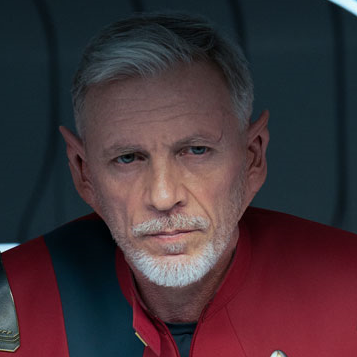This has been driving me nuts. For most of Star Trek’s history, the Prime timeline holds together no matter what happens to it. Kirk jumps around, Picard gets stuck in time loops, Janeway rewrites entire centuries, and the universe just snaps back like it never happened. Time feels elastic but stable.
Then Nero falls through a black hole, and everything falls apart. The Kelvin event doesn’t just make a new branch going forward. The ripple hits both directions. It rewrites history that should already be set. Starfleet looks different. Vulcan feels different. Even the technology and design philosophy seem changed long before Nero was ever born. That sounds less like a branch and more like time itself got rewritten.
Once that happens, the Temporal Prime Directive starts to fall apart. It only works if time moves in one direction. You can “fix” something when there’s a clear before and after. But if the ripple goes both ways, there is no original timeline to go back to. The moment the Kelvin universe forms, the concept of Prime reality stops being a single point.
And that’s before you even touch the Mirror Universe, which is not a branch at all. It has been running beside the Prime since the beginning. So now we have at least three full continuums: Prime, Mirror, and Kelvin. But that’s not the end of it. The Star Trek Online timeline exists as an extension of Prime, playing out events after Nemesis and even connecting to the Temporal Cold War. The licensed novels follow yet another line, continuing after Destiny and Coda, where the multiverse literally starts to collapse under the weight of too many versions.
So what is the Federation even supposed to do with the Temporal Prime Directive at this point? Which universe counts as the real one? Do you merge them? Do you pick one and call it Prime? Or do you admit that every version is its own living reality with its own moral weight?
Maybe the point isn’t fixing anything anymore. Maybe the Temporal Prime Directive is just damage control. Once time starts rewriting itself both ways and spawning whole new continuums like STO or the book universe, there’s no putting it back together. The best you can do is keep the pieces from smashing into each other and hope reality doesn’t collapse under the strain.
Picard and Strange New Worlds muddle things a bit as well. The date and details of the Eugenics Wars get pushed back a few decades, but time itself seems to always make sure the events happen.
Enterprise at a certain point just stopped engaging with the mechanics of the Temporal Cold War, but small changes to timelines were apparently are hard to detect and take a while to ripple out. The Temporal Prime Directive seemed to be less about making sure things played out exactly the same, and more concerned about the arc of history. A few time loops and predestination paradoxes weren’t enough to break history.
Yesterday’s Enterprise and Star Trek (2009) show that history eventually can hit a breaking point. The Enterprise-C going missing at a crucial moment or Vulcan exploding are hard to correct for.
As for the aesthetics of the Kelvin prologue, I’d just chalk that up to the presentation of the film rather than time rippling out in both ways.
That’s why I call the Kelvin timeline “Star Trek 90210” and write it out of my head-canon.
Jar-Jar Abrams did not make real Star Trek (nor real Star Wars, IMO). (Didn’t Abrams even say in an interview that he’d never watched Trek?) Star Trek 90210 was a fun fan fic to get people interested in “real” Star Trek.
I like that term I will use it.
the Prime timeline holds together no matter what happens to it.
This isn’t quite true. Most of the time, Star Trek asserts that time travel to the past can and does alter the “prime” timeline - this is directly observed in “Past Tense” and “First Contact” (the movie, of course), when crew members who are protected from the alterations see reality warp before their very eyes. In those cases, the time travelers are forced to do what they can to “repair” history and get events to play out reasonably similar to how they orginally had. I assume things are still different, but they’re considered “close enough”.
The Kelvin event doesn’t just make a new branch going forward. The ripple hits both directions.
This is a little contentious, but I agree with this interpretation, even though the actual films are pretty vague on exactly how the alternate reality came to be. It’s certainly a contradiction of basically every other depiction of time travel. But hey, it was a unique circumstance.
TNG’s “Parallels” deserves a mention as well, since it states that their are infinite parallel realities (and we see a bunch of them).
In general, here’s what I think is true:
-
An infinite number of quantum realities exist. These have nothing to do with time travel, and simply…are.
-
Time travel to the past can, and usually does, alter the future. Separate quantum realities are not created. These are the situations that the 26th century Federation time cops are concerned with.
-
The Kelvin Timeline seems to be an exception to (2), though I suppose there’s a possibility that Spock and Nero simply tunnelled over to a different quantum reality, in addition to travelling through time. This is 100% pure fanon, though.
I think that is what bothers me most about the Kelvin timeline is it seems not to conform to the Prime. The only way I can square it is that the trip through the blackhole not only went back in time but to a different reality.
It bugs me a bit too, but I guess there’s nothing really wrong with it being “the exception that proves the rule” - something extraordinary happened in that case, unlikely to repeat.
And the pre-existing time travel rules weren’t exactly clear-cut, either - my original response glossed over bootstrap paradoxes like “Time’s Arrow”, where the characters travel back in time because they found Data’s head in San Francisco, which was only there due to said time travel.
But then, from the perspective of people in the future, I suppose all time travel events look like bootstrap paradoxes…
-
That’s honestly one of the reasons I like sto, its like a sequel to 90s trek
I need to play more. I have a lifetime I bought in beta and I need to get requited with it.
[off topic?]
My favorite time travel novel is ‘The Big Time’ by Fritz Leiber. His take is that there’s a “Law of conservation of Reality” in effect. Go back and shoot Hitler every day of his life and you still won’t change anything; the guy is pretty much a permanent fixture.
What you have to do is raise an immense army and go back and make millions of changes until you break the time stream and get a Big Change. Then you’ve got to raise another army, because a lot of those people you’ve been using never existed in the new time line.
Janeway figured out the best way to determine what universes are real vs what are fractured timelines comes down to how much coffee a particular universe has since every time you drink coffee you timetravel a bit (notice how you get more things done? It is because you were able to bend time) and collectively everybody mildly timetravelling heals damage to the timeline caused by egregious timetravelling acts done by nefarious individuals.
You’mean there could be a universe where Tuvix is still alive?
Dozens, Hundreds. It’s impossible to tell.
Wait’ll you get a load of season 5 of Lower Decks.
For most of Star Trek’s history, the Prime timeline holds together no matter what happens to it.
I respectfully disagree.
James Kirk of the united earth space probe agency or whatevs sends his regards to the united federation of planets 🙃
Later in Disco we see… many anachronisms, which makes it hard to write of earlier inconsistencies as just errata.
My own conclusion is that star trek is like a jigsaw puzzle both with some pieces missing and some pieces from other puzzles entirely.
Edit: as a counter point, I would say that statement is true of other (smaller) franchises, like planet of the apes.






